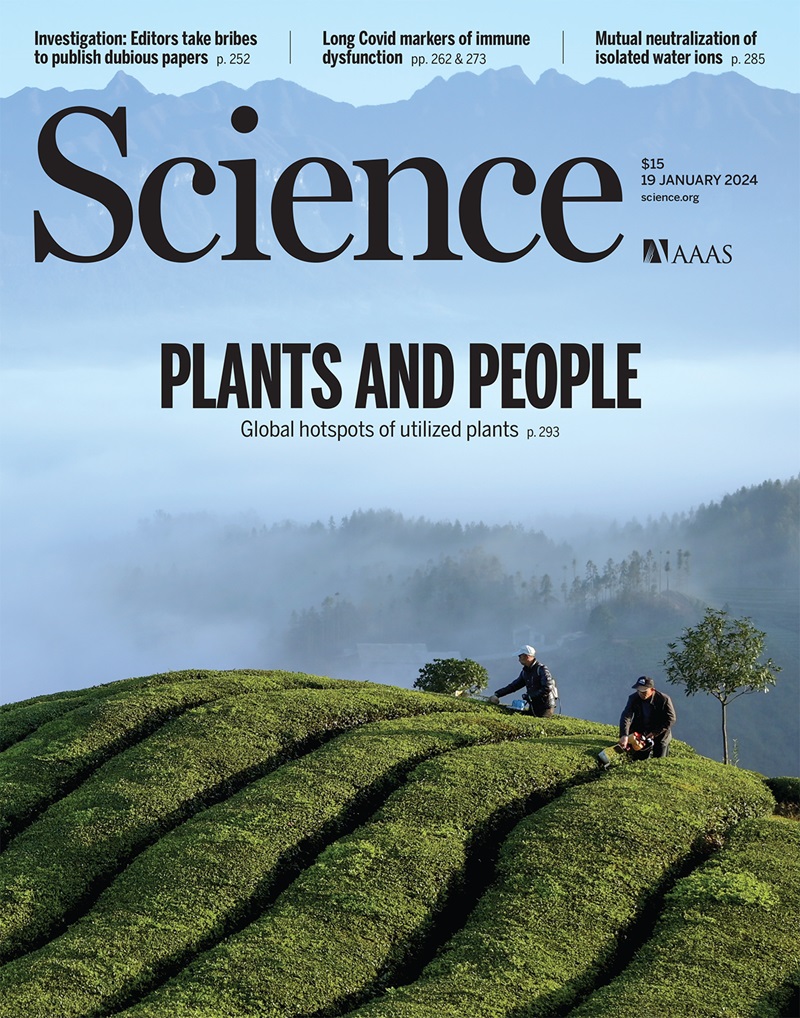Visible light–mediated aza Paternò–Büchi reaction of acyclic oximes and alkenes to azetidines
IF 44.7
1区 综合性期刊
Q1 MULTIDISCIPLINARY SCIENCES
引用次数: 0
Abstract
The aza Paternò–Büchi reaction is a [2+2]-cycloaddition reaction between imines and alkenes that produces azetidines, four-membered nitrogen-containing heterocycles. Currently, successful examples rely primarily on either intramolecular variants or cyclic imine equivalents. To unlock the full synthetic potential of aza Paternò–Büchi reactions, it is essential to extend the reaction to acyclic imine equivalents. Here, we report that matching of the frontier molecular orbital energies of alkenes with those of acyclic oximes enables visible light–mediated aza Paternò–Büchi reactions through triplet energy transfer catalysis. The utility of this reaction is further showcased in the synthesis of epi-penaresidin B. Density functional theory computations reveal that a competition between the desired [2+2]-cycloaddition and alkene dimerization determines the success of the reaction. Frontier orbital energy matching between the reactive components lowers transition-state energy (ΔGǂ) values and ultimately promotes reactivity.
可见光介导的无环肟、烯与氮杂环丁烷的帕特诺-布奇反应
帕特诺-布奇(Paternò-Büchi)氮杂反应是亚胺与烯烃之间的[2+2]-环加成反应,可生成氮杂环丁烷,即四元含氮杂环。目前,成功的例子主要依靠分子内变体或环状亚胺等价物。要充分释放帕特诺-布奇(Paternò-Büchi)氮杂环反应的合成潜力,就必须将反应扩展到无环亚胺等价物。在此,我们报告了烯类与无环亚胺的前沿分子轨道能量相匹配,通过三重能传递催化,实现了可见光介导的氮杂帕特农-布奇反应。密度泛函理论计算显示,所需的[2+2]-环加成反应和烯二聚化之间的竞争决定了反应的成败。反应组分之间的前沿轨道能量匹配降低了过渡态能量(Δ G ǂ)值,最终促进了反应的进行。
本文章由计算机程序翻译,如有差异,请以英文原文为准。
求助全文
约1分钟内获得全文
求助全文
来源期刊

Science
综合性期刊-综合性期刊
CiteScore
61.10
自引率
0.90%
发文量
0
审稿时长
2.1 months
期刊介绍:
Science is a leading outlet for scientific news, commentary, and cutting-edge research. Through its print and online incarnations, Science reaches an estimated worldwide readership of more than one million. Science’s authorship is global too, and its articles consistently rank among the world's most cited research.
Science serves as a forum for discussion of important issues related to the advancement of science by publishing material on which a consensus has been reached as well as including the presentation of minority or conflicting points of view. Accordingly, all articles published in Science—including editorials, news and comment, and book reviews—are signed and reflect the individual views of the authors and not official points of view adopted by AAAS or the institutions with which the authors are affiliated.
Science seeks to publish those papers that are most influential in their fields or across fields and that will significantly advance scientific understanding. Selected papers should present novel and broadly important data, syntheses, or concepts. They should merit recognition by the wider scientific community and general public provided by publication in Science, beyond that provided by specialty journals. Science welcomes submissions from all fields of science and from any source. The editors are committed to the prompt evaluation and publication of submitted papers while upholding high standards that support reproducibility of published research. Science is published weekly; selected papers are published online ahead of print.
 求助内容:
求助内容: 应助结果提醒方式:
应助结果提醒方式:


